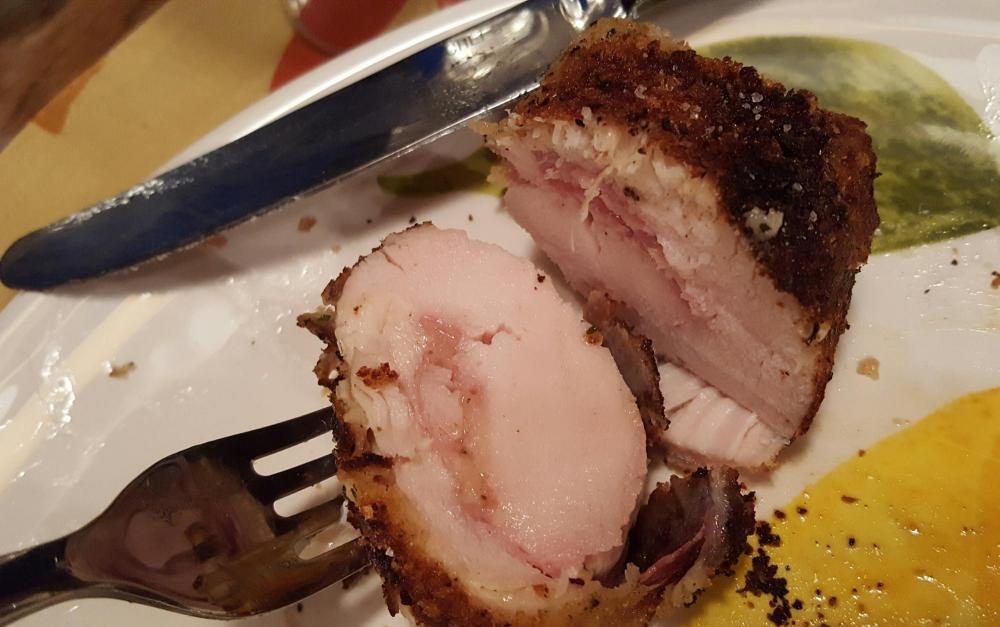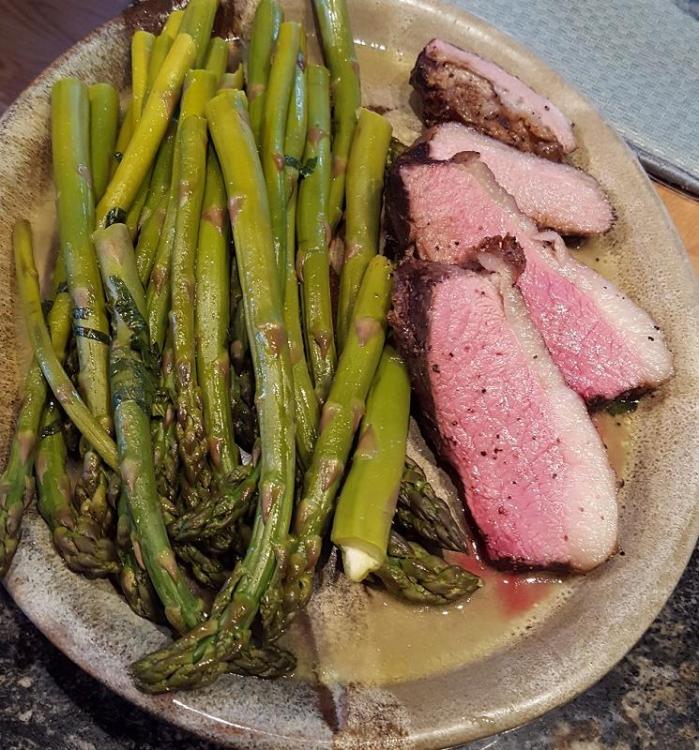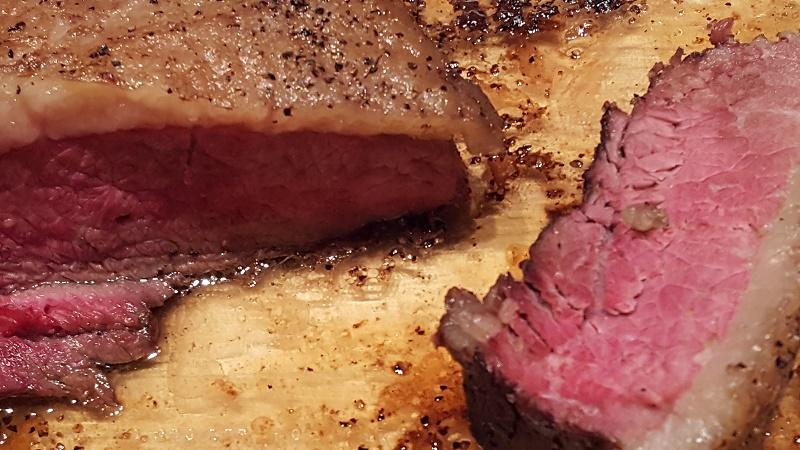-
Posts
13,573 -
Joined
-
Last visited
Content Type
Profiles
Forums
Store
Help Articles
Everything posted by Smithy
-
You might consider making some ice cream, also. This recipe (a family favorite) lends itself well to plums, nectarines, peaches or a blend. I have it happily associated, forever, with California summers. If you don't have time now to do the churning, you can do the puree and freeze for later.
-
Did you find out the purpose of that 'spreader spoon' yet? It has a rather Victorian look to it.
-
With pictures, please.
-
I feel as boggled by the abundant unfamiliarity as if I'd landed in those markets myself! Thanks for posting these. What was the combination of baby octopus and quail egg like? Did they play off each other well? I wondered about the gold leaf on the soft-serve ice cream cone and, until your caption, thought it was some new drip-saving method. Does the leaf add a flavor, or is it more about the texture and color (and luxury)?
-
I remember my shock when I moved from the L.A.area to way north in northern Minnesota and discovered that restaurants closed no later than 8 p.m. there! It was quite the cultural adjustment. Still, I'm surprised that the lunch opportunities stop so early in your large city.
-
Welcome back, sir! Is San Francisco as wonderful now that you live there instead of being a visitor?
-
What about as a spice, like mustard seeds?
-
I had forgotten about that linked topic. It has good depth (thank you, @EnriqueB and others) and is good additional reading for us neophytes. One of my immediate takeaways is the importance of rapid chilling unless the food is to be finished and served quickly. Thanks for that post link, pbear.
-
I hope you do, huiray, and that you post about it. The flowers look like potential seasonings - maybe not large enough to fry (like chive or onion flowers) but to be picked off their stems and scattered over a finished dish. OTOH there may be many other things to be done with them; I'd like to learn more.
-
"How do you want your egg?" "Soft-boiled is fine." "OK. 62, 63 or 64C?"
- 44 replies
-
- 12
-

-
Yes, that's a nice writeup, @paulraphael. Finding my way through the forest of sous vide information - here and elsewhere - is quite a job. It's nice to get succinct pointers along the way.
-
@rotuts: you're right that there's a massive amount of info already here. Thank you for that compilation; it helps a lot.
-
"We have bad cooked foods, no bad foods"...I like that philosophy!
-
This is a follow-up question to my previous question about the order (sous vide or smoker first). Some of the tenderizing enzymes shut off at 140F, according to what I've read, and so the recommendation for tough beef that I followed kept the temperature below that magic number. The numbers you cite from Modernist Cuisine are higher than that. Do they discuss the enzyme(s) in question and why they chose those particular temperatures?
-
@djyee100, if I lived where you do I'd get myself to the Luther Burbank Home and Gardens in Santa Rosa. I bought a rosemary plant there oh, 5 or 8 years ago, and until this winter it has flourished - a happy reminder of a trip with my mother and sister. This winter it was badly neglected, and when I arrived back home I found it struggling to survive. I've cut away its 4 very dead branches and repotted the root with two surviving branches, and I'm keeping my fingers crossed. It's a good variety that I recommend for culinary value, and I think in your area it would thrive. The plants they sell there aren't necessarily descended from those of Burbank's garden (although some are), but they are all of types that he could have grown in his day.
-
A version of Chicken Cordon Bleu, based loosely on a recipe in the Anova app. I used different stuffing and seasoning but used their time, temperature and finish. The difference between chicken breast cooked sous vide and other cooking methods really is astonishing. It's as moist as people claim and quite tender. I'll use more stuffing next time and may increase the temperature slightly for texture, but this is basically a keeper.
-
Thanks for that information, Dave. We finished the brisket last night in the smoker, and although the flavor was good the texture was only slightly more tender than our previous (smoker only) attempt. It wasn't anywhere near the "turning to mush" stage, so I'll try the much longer cook next time. Does Modernist Cuisine say why they start in the smoker and finish sous vide, instead of the other way around? Brisket needed more time, asparagus (also sous vide) less. I let that go too long, out of negligence. Flavor was good, though. The asparagus recipe was from Anova's app.
-
Welcome, Auro. What sorts of food do you like to cook and eat?
-
Thanks, rotuts. I meant to mention that I have the beginnings of a lab record on paper (couldn't find a red cover) but may go with an electronic log instead, as inspired by Porthos. I neglected to write the start time yesterday for the meat, so the total hours part of the record will be incomplete for this batch. We are trying to reproduce Texas-style brisket without actually going to Texas for it: meaty, juicy, tender, doesn't need to be sliced thinly to be tender, excellent warm. At this time of year Texas is a fur piece away and a bit too hot for my liking.
-
So...you enablers and provocateurs, my Anova WiFi arrived earlier this week. I did some center-cut pork chops for the first run. Maybe they were more tender than usual, maybe not. I probably should follow the above-cited Get Started With Sous Vide - Your First Week's Menu and follow it step by step, but I have brisket on hand and have decided to jump on it. We purchased it for smoking and had it vacuum-sealed in three chunks at the butcher's. The first chunk we did in the smoker alone, before I gave into the sous vide temptation; although it was delicious, it was also tough. (This meat has a beautiful fat cap but is not well marbled.) I decided to try the second chunk by tenderizing sous vide, finishing in the smoker and seeing whether it made a difference. The second chunk spent last night - 12 to 14 hours - at 135F, based on size and this information at MolecularRecipes.com. In addition to providing a succinct table, they note that some of the enzymes that help tenderize meat work well up to 140F - faster at warmer temperatures - and deactivate above that temperature. It was necessary to pull the brisket this morning and ice it (it's coming to room temp now) rather than following Chris Hennes' advice to go directly to the smoker, but now I'm getting nervous: it doesn't feel any more tender in the bag than it did before I started. I'm very afraid of overcooking it and turning it to mush, but I wonder whether it's had the right treatment - enough, at the proper temperature. How do you know when a chunk of meat like this has been in the bath long enough? Open the bag, cut, and reseal for more treatment if not ready? Does anyone have advice for me for this meat and where I should go from here? Any comments on its treatment so far?
-
Oh, dear. That was bread?
-
What different timing we have! I just yesterday decided it was warm enough to plant my tomatoes and herbs in pots too large to bring inside at night. Those plants were all started in (someone else's) greenhouses, but we had frost warnings earlier this week.
-
I've been surprised at the ground covered by some of the San Joaquin Valley farmers: not only coming to Visalia from Fresno (~50 miles) and Dinuba (30 miles?) but also coming to Southern California. The Claremont Farmers' Market had peaches and nectarines from Dinuba this May (that's at least 200 miles), and I often hear Dinuba and Fresno growers mentioned on the segment of KCRW's Good Food podcast discussing the Santa Monica Farmers Market for the week. OTOH the agricultural land left near Claremont and Santa Monica is minimal, and if the farmers can get their good-quality produce to a larger market, more power to them.
-
@kayb, damn! Mend quickly.
-
@rotuts, in my experience "country style" ribs tend to be tough. Does the CSB tenderize them, or just prevent them from drying out? I'm mostly wondering how the CSB results compare to doing those ribs sous vide. One obvious difference is that sous vide would require an extra step for browning. What else does the CSB do for you, compared to that other toy?





